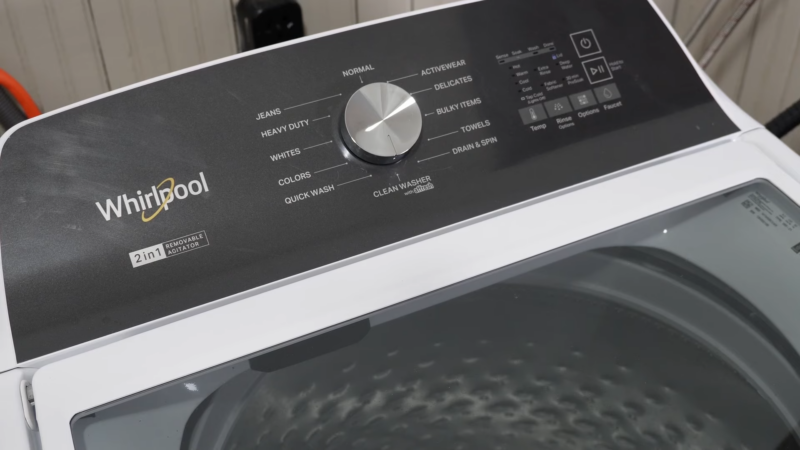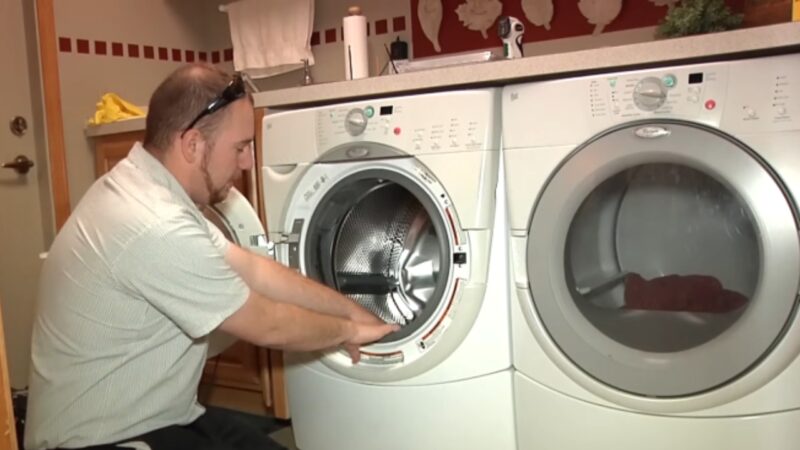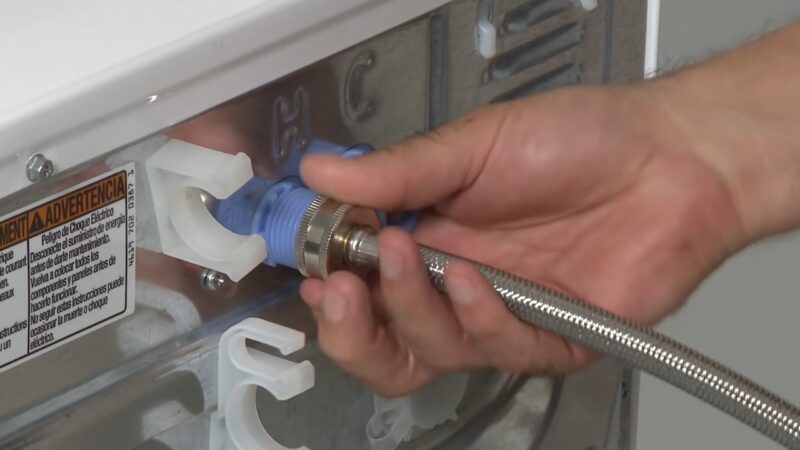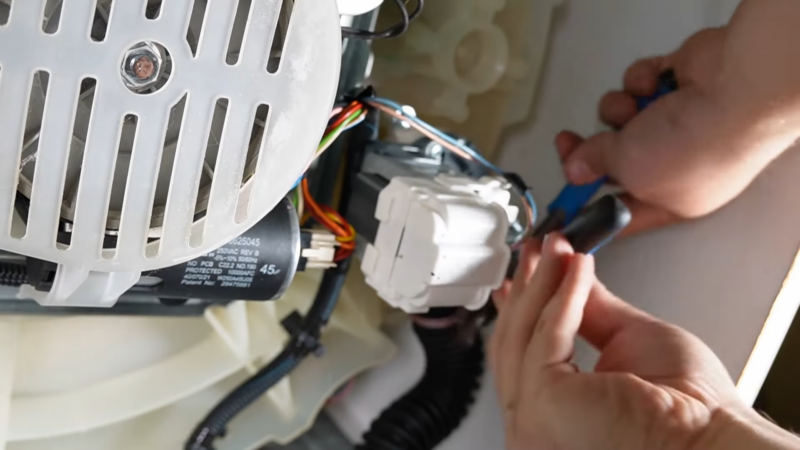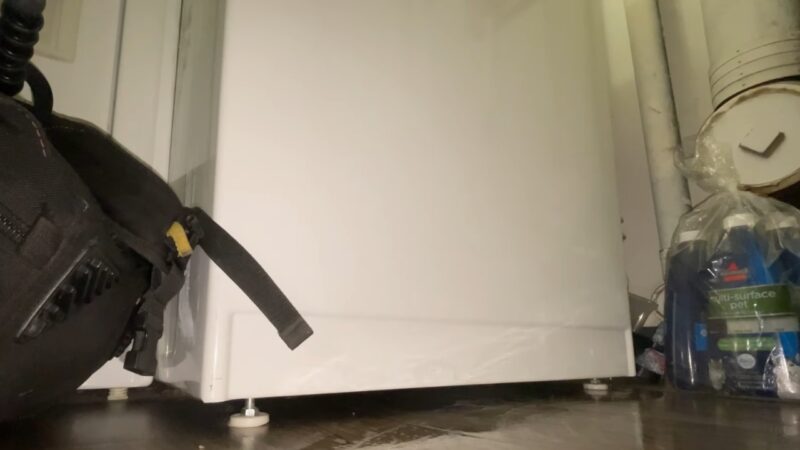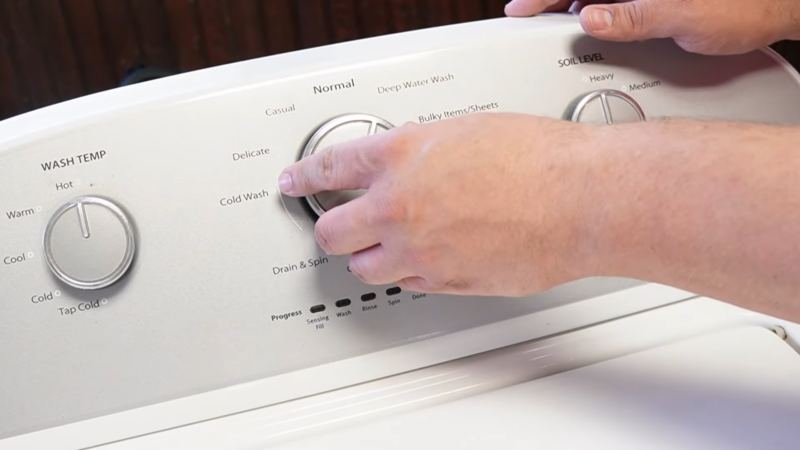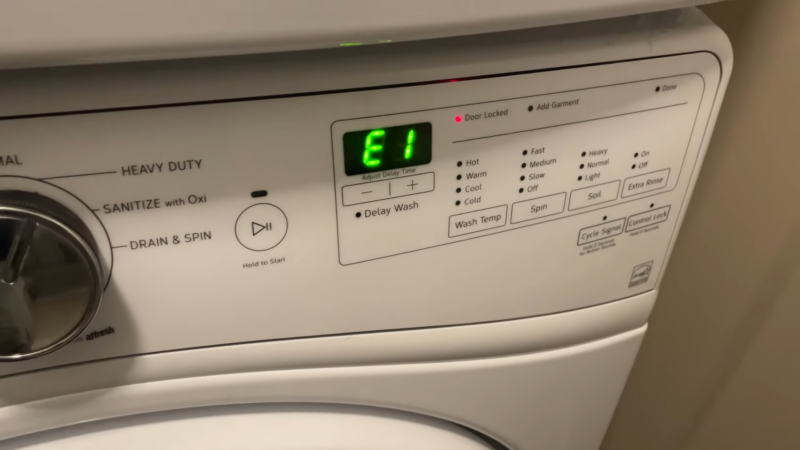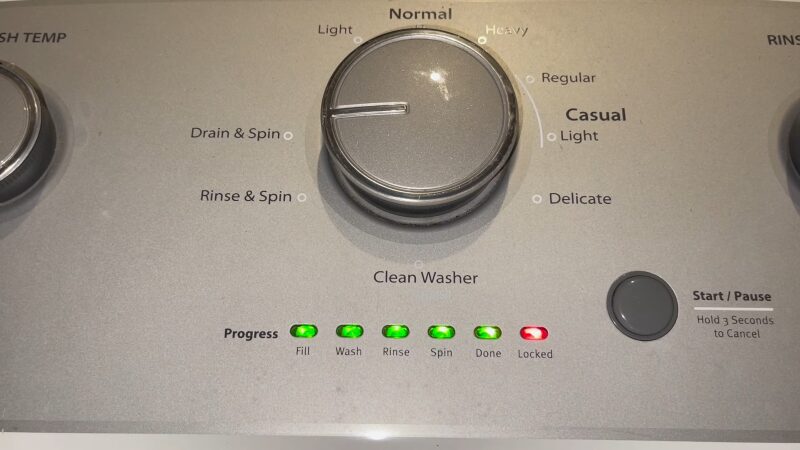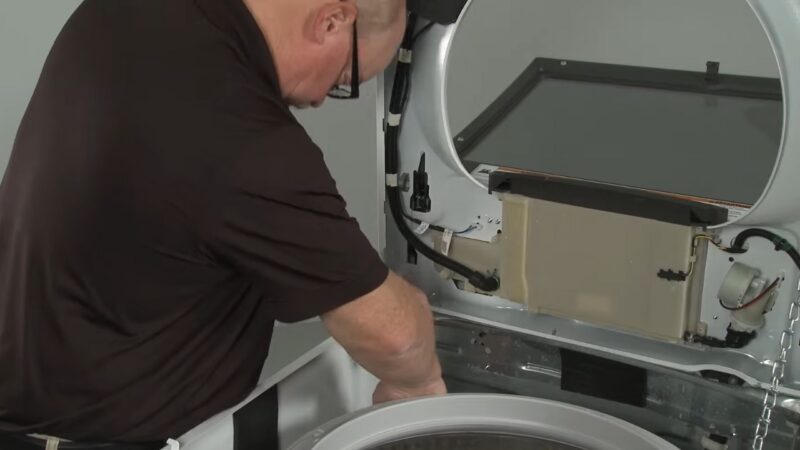Having problems with your Whirlpool washer can really throw a wrench in your daily routine. Spotting the signs that your washer needs a little TLC can save you time and money, keeping small issues from turning into expensive repairs. Whether it’s mysterious leaks or weird noises, knowing what to watch out for can make a huge difference.
So, if your clothes come out soaking wet after a full cycle or the washer won’t start at all, these are big red flags. Recognizing specific symptoms like these can help you pinpoint the problem and find the right fix.
Jumping on these signs early can seriously boost your washer’s lifespan. Maybe it’s an unbalanced load causing all that shaking, or a clogged drain hose that’s making water stick around. Sorting these problems out ASAP will keep your machine running like a champ
9 Common Issues Indicating Troubleshooting is Necessary
1. Unusual Noises
If your Whirlpool washer is making unusual noises, it usually indicates an underlying problem that requires attention.
- Loud Banging
- Grinding Sounds
- Rattling Noises
- Whirring Sounds
- Humming
- Squeaking
- Clicking
2. Inadequate Water Fill
Your Whirlpool washer might be facing an inadequate water fill issue if it fails to fill up properly or the water enters the drum too slowly. This problem can significantly affect the washing performance and can arise due to multiple reasons.
First, check the water supply. Ensure that the water taps supplying the washer are fully open and that the hoses are not kinked or blocked.
Another common issue is with the water inlet valve. The valve opens to let water into the washer, and if it is defective, your washer may not fill correctly. You can inspect the valve for any signs of damage or clogs.
Additionally, water pressure is crucial. The inlet valve needs sufficient water pressure to function correctly. Low water pressure could result in inadequate filling. You can use a pressure gauge to check the pressure from your household water supply.
Inspect the inlet screens. Sometimes, debris can clog the screens in the inlet valves, restricting water flow. Cleaning these screens can solve the problem.
3. Problems with the Spinning Cycle
If your Whirlpool washer isn’t spinning as it should, this can lead to wet, unwashed clothes. Several issues may cause this malfunction.
Common Causes
- Unbalanced Load: An imbalanced load can prevent your washer from spinning properly. Ensure clothes are evenly distributed to avoid this issue.
- Lid Switch: The lid switch signals the washer to start the spin cycle. If defective, your washer might not spin.
- Drive Belt: A worn or broken drive belt can stop the drum from spinning. Inspect and replace it if necessary.
Troubleshooting Steps
- Check for Obstructions: Make sure there are no objects blocking the drum.
- Examine the Belt: Look for signs of wear or damage on the drive belt.
- Test the Lid Switch: Ensure this component functions correctly.
4. Drainage Difficulties
Experiencing drainage issues with your Whirlpool washer can disrupt your laundry routine. Here are some common signs and solutions for drainage problems.
First, listen for unusual noises. A grinding or humming sound may indicate a clogged pump or a faulty motor. Regularly clean the pump filter to avoid blockages.
Check for an unbalanced load. Washing machines can struggle to drain properly if the load is not evenly distributed. Rearrange your laundry evenly around the drum and try the spin cycle again.
Perform a reset to address control panel issues. Unplug your washer for a minute, then plug it back in. This can often resolve minor glitches.
Inspect the suspension rods. Damaged rods can cause the tub to become unbalanced, leading to incomplete drainage. Examine the rods for any signs of wear and replace them if necessary.
Finally, consult the user manual for specific troubleshooting steps for your model. Each model may have unique features and solutions, ensuring you address the problem correctly.
5. Water Leaks
Water leaks in your Whirlpool washer can indicate several issues. It’s crucial to address these problems promptly to prevent further damage.
Common Causes of Water Leaks
- Hose Connections: Check the water hoses attached to the back of your washer. Loose or damaged hoses can cause leaks.
- Tub Seal: A torn tub seal can lead to water leaking into the tub bearings. This often necessitates replacing both the seal and the bearings.
To start investigating, first shut off the water supply by turning off the valves where the hoses connect to the machine.
Next, release any remaining water pressure by disconnecting the hose from the water inlet and running the washer to drain the water from the line.
6. Power Discrepancies
When your Whirlpool washer doesn’t start, the issue may be related to power discrepancies. Ensure the washer is firmly plugged in. Sometimes, the power cord can become loose or unplugged.
Check the power supply and circuit breaker. Confirm that the circuit breaker is on. If it has tripped, reset it.
A faulty outlet might be another cause. Try plugging a different device into the same outlet to see if it works.
Inspect the power cord for damage. Look for any visible signs of wear or tear that could be preventing your washer from receiving power.
Test the power button. Sometimes the power button itself might be faulty. Press and hold the button for a few seconds to see if that helps.
Use a multimeter to check the voltage flowing to the washer. This can help verify if the power supply is consistent and adequate for the washer’s requirements.
7. Error Messages on Display Panel
When using a Whirlpool washer, you may encounter various error messages on the display panel. Recognizing these messages can help diagnose issues quickly.
Common Error Codes
F9 E1
This code indicates a drainage problem. Check if the hose is too far inside the drain pump and readjust if necessary. Additionally, ensure there is some airflow to assist with drainage.
Int
This means the cycle was paused or canceled. The washer will display this for 20 to 30 minutes while draining. If it persists, press the Cancel or Pause button twice or unplug the washer for a minute and then plug it back in.
F5 E2
This code usually points to an issue with the door lock mechanism. Make sure the door is fully closed and latched.
F8 E1
Indicates a problem with the water supply. Double-check that both water inlet valves are fully open and the hoses are not kinked or clogged.
Steps to Reset
- Press the Cancel or Pause button twice.
- Unplug the washer for one minute.
- Plug it back in to reset the system.
8. Cycle Interruptions or Incompletion
Cycle interruptions or incomplete cycles in a Whirlpool washer can indicate underlying issues. These problems can often be addressed with straightforward troubleshooting steps.
- Power Issues: Ensure the washer is securely plugged in and receiving power. An unstable supply might cause the cycle to stop.
- Load Imbalance: An uneven load can trigger safety mechanisms. Make sure clothes are evenly distributed in the drum to prevent imbalance.
- Control Panel Malfunctions: Sometimes, the control panel might need a reset. Unplug the machine, wait a minute, then plug it back in and reset it by holding the start button for 10 seconds.
9. Excessive Vibration or Movement
One of the primary reasons could be broken or damaged counterbalance springs. These springs absorb the movement of the washer tub, and if one breaks, it leads to an imbalanced tub.
Another possibility is worn-out hub teeth or drive block. If these parts are stripped, the inner tub won’t engage properly, causing significant vibration. Inspect both components and replace them if necessary.
Additionally, check the clutch pads on the basket drive. Worn clutch pads may be another reason for the imbalance and should be replaced if found to be the culprit.
Inspect your laundry loads. Overloading or unevenly distributed clothes can cause the washer to shake. Ensure that clothes are evenly distributed inside the drum and avoid running single, large, bulky items.

